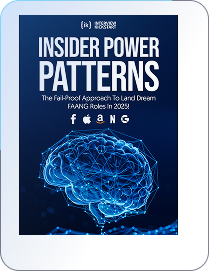Being one of the world’s largest tech and e-commerce companies, it’s no wonder that Amazon has done a lot to integrate machine learning and artificial intelligence applications to optimize its operations and services. Machine learning engineers play a crucial role in Amazon’s data science team. They research, build, and design the AI responsible for machine learning. They also work to maintain and improve existing AI systems.
A typical salary of an Amazon machine learning engineer is $153,661 per year. Understandably, Amazon interviews are as competitive as the salary they offer. Amazon’s robust machine learning interview process includes an initial screen, a technical interview, and an on-site interview.
We’ve curated some Amazon machine learning interview questions to help you gauge your preparation level for your Amazon ML interview. Read ahead to learn more!

We’ll begin with some sample Amazon machine learning interview questions and answers to get a basic idea of what to expect.
Dropping the rows or columns with the missing or corrupted dataset or replacing them entirely with a different value are two easy ways to handle such a situation. Methods like IsNull(), dropna(), and Fillna() help in accomplishing this task.
Sentiment Analysis, Email Spam Detection, Fraud Detection, and Healthcare Diagnosis are some applications of Supervised Machine Learning.
Ensemble learning involves meta-algorithms combining various ML techniques into a single predictive model. The aim of doing that is stacking, bagging, or boosting. That is, to improve predictions, decrease variance, or decrease bias.
Bagging is a way to merge the same type of predictions, whereas boosting refers to a method of merging different types of predictions. Bagging decreases variance, and boosting decreases bias, not vice versa.
K-means is an unsupervised learning algorithm, whereas KNN is a supervised learning algorithm. K-means is mainly used for clustering problems, and the KNN algorithm is primarily used for classification and regression problems.
Want to be an ML engineer at Amazon? Check out our post on Amazon Machine Learning Engineer Interview Prep to kickstart your journey.
Here are some Amazon machine learning interview questions. Ensure you can solve them before your interview:
It helps ease interview anxiety to know the Amazon Machine Learning Engineer Interview Process before the interview. Follow the link to learn more.
Lastly, let’s take a look at some advanced machine learning interview questions for experienced professionals asked at Amazon:
We hope that this list of Amazon ML interview questions will help you crack your tech interview. Don’t forget to take up some mock interviews and check our list of 50+ Machine Learning Interview Questions for more practice.
Q1. Is machine learning used in Amazon?
Yes, widely. The aggregation and analysis of purchase data using ML lead Amazon to better forecast the product demand. The ML analysis of the consumer purchase patterns also helps Amazon spot fraudulent purchases.
Q2. What is the type of machine learning that Amazon uses for business?
Amazon ML uses logistic regression: logistic loss function + SGD for binary classification and multinomial logistic regression: multinomial logistic loss + SGD for multiclass classification.
Q3. How much does an Amazon machine learning engineer earn on average?
An Amazon Machine Learning Engineer in the United States typically earns about $153,661 per annum.
Q4. What are the three types of machine learning?
The three types of machine learning are unsupervised, supervised, and reinforcement learning.
Q5. Which algorithms are most widely used in machine learning?
Linear regression, Decision tree, Logistic regression, KNN algorithm, K-means, SVM algorithm, Naive Bayes algorithm, and Random forest algorithm are some of the most widely used algorithms in Machine Learning.
Interview Kickstart’s Machine Learning Engineering Interview Course is designed and taught by ML experts from FAANG and Tier-1 tech companies. These courses are tailored to help ML engineers nail the most challenging tech interviews.
If you’re looking for guidance and help with getting started, sign up for our FREE webinar. As pioneers in technical interview preparation, we have trained thousands of software engineers to crack the most challenging coding interviews and land jobs at their dream companies, such as Google, Facebook, Apple, Netflix, Amazon, and more!
â€
Attend our free webinar to amp up your career and get the salary you deserve.

693+ FAANG insiders created a system so you don’t have to guess anymore!

100% Free — No credit card needed.

Time Zone:






Get your enrollment process started by registering for a Pre-enrollment Webinar with one of our Founders.

The 11 Neural “Power Patterns” For Solving Any FAANG Interview Problem 12.5X Faster Than 99.8% OF Applicants
The 2 “Magic Questions” That Reveal Whether You’re Good Enough To Receive A Lucrative Big Tech Offer
The “Instant Income Multiplier” That 2-3X’s Your Current Tech Salary

The 11 Neural “Power Patterns” For Solving Any FAANG Interview Problem 12.5X Faster Than 99.8% OF Applicants
The 2 “Magic Questions” That Reveal Whether You’re Good Enough To Receive A Lucrative Big Tech Offer
The “Instant Income Multiplier” That 2-3X’s Your Current Tech Salary
Just drop your name and email so we can send your Power Patterns PDF straight to your inbox. No Spam!
By sharing your contact details, you agree to our privacy policy.
Time Zone: Asia/Dhaka

We’ve sent the Power Patterns PDF to your inbox — it should arrive in the next 30 seconds.
📩 Can’t find it? Check your promotions or spam folder — and mark us as safe so you don’t miss future insights.
We’re hosting a private session where FAANG insiders walk through how they actually use these Power Patterns to crack interviews — and what sets top performers apart.
🎯 If you liked the PDF, you’ll love what we’re sharing next.
Time Zone:

